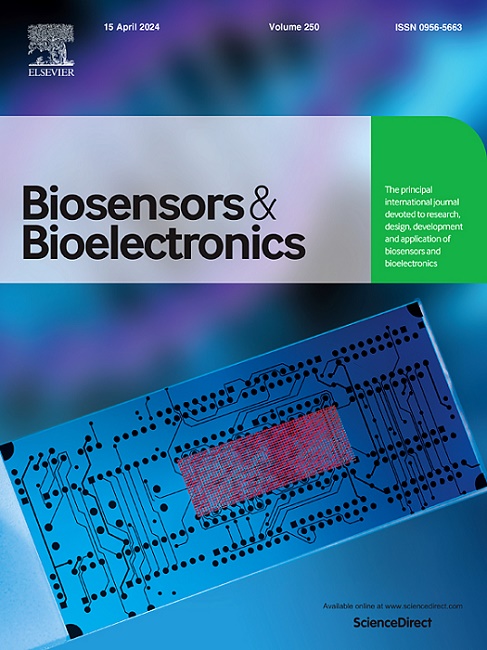Portable, quantitative, real-time isothermal nucleic acid amplification test using microfluidic device-coupled UV-LED photodiode detector
IF 10.7
1区 生物学
Q1 BIOPHYSICS
引用次数: 0
Abstract
We report a stand-alone, automated, fully quantitative, and portable Microfluidics Integrated LED-Photodiode (MILP) sensing technology as a new molecular diagnostic platform for rapid point-of-care nucleic acid testing in real-time. The all-in-one device integrates a paper-based assay for nucleic acid purification using a polymer-based membrane filter, in-situ isothermal amplification, dual-mode optical detection, and fully quantitative signal analysis by capturing the photovoltaic response using electrical polarity and photocurrent measurements. Highly selective photovoltaic cut-offs may readily recognize test-gene-specific variations quantitatively without requiring further auxiliary instrumentation. The on-cartridge limit of detection (LoD) showed 10 copies/μL, which could diagnose SARS-CoV-2 samples with high clinical sensitivity (95%) and specificity (100%) with reference to real-time PCR-based gold-standard benchmark. Our findings emphasize the test's unique advantages for intensive health surveillance, enabling early disease screening, precise severity assessment, and real-time tracking of disease progression in resource-limited settings without the need for extensive and expensive laboratory infrastructure.
求助全文
约1分钟内获得全文
求助全文
来源期刊

Biosensors and Bioelectronics
工程技术-电化学
CiteScore
20.80
自引率
7.10%
发文量
1006
审稿时长
29 days
期刊介绍:
Biosensors & Bioelectronics, along with its open access companion journal Biosensors & Bioelectronics: X, is the leading international publication in the field of biosensors and bioelectronics. It covers research, design, development, and application of biosensors, which are analytical devices incorporating biological materials with physicochemical transducers. These devices, including sensors, DNA chips, electronic noses, and lab-on-a-chip, produce digital signals proportional to specific analytes. Examples include immunosensors and enzyme-based biosensors, applied in various fields such as medicine, environmental monitoring, and food industry. The journal also focuses on molecular and supramolecular structures for enhancing device performance.
 求助内容:
求助内容: 应助结果提醒方式:
应助结果提醒方式:


